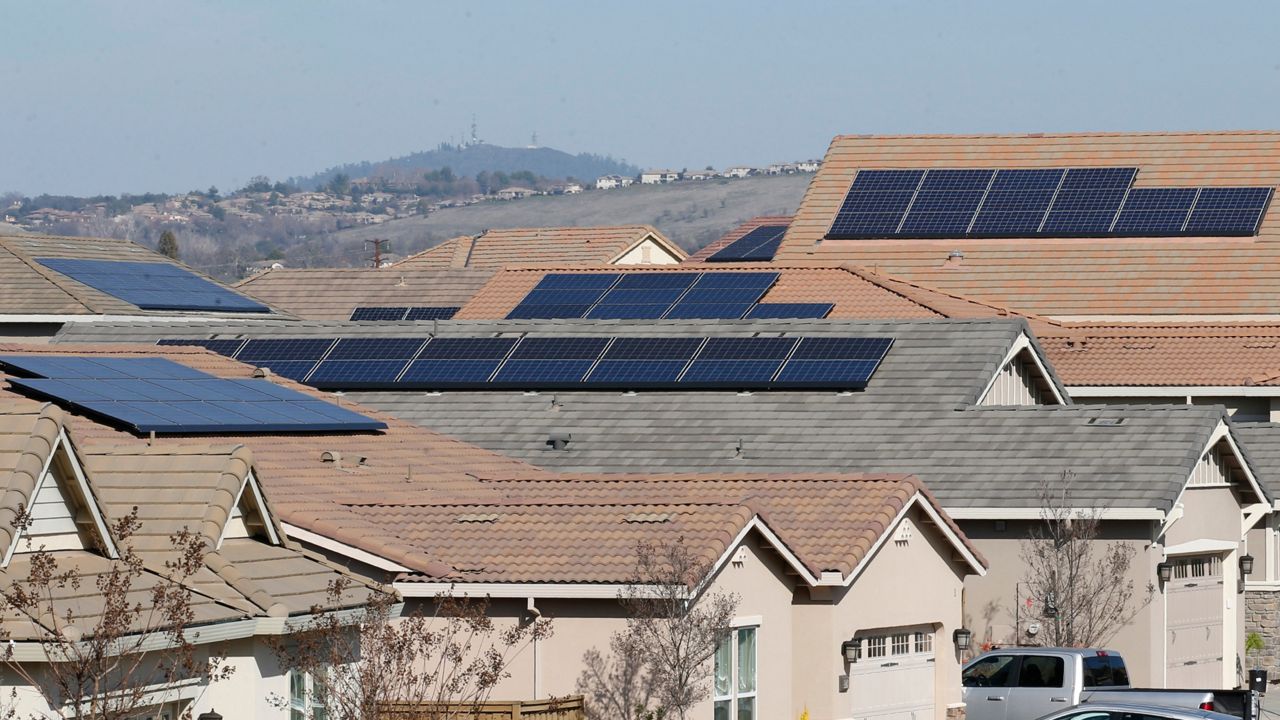Environmental justice advocates throughout California are holding rallies Thursday to protest a change to how rooftop solar customers are compensated for the electricity they produce.
Later this month, the California Public Utilities Commission will vote on whether to reduce the so-called net-metering payments to solar users from 30 cents per kilowatt hour to about 8 cents.
Net metering is the practice of allowing solar users to get credits on their electricity bills or receive direct payments for the excess solar energy they produce and return to the power grid.
“The net energy metering proposal would effectively kill the growth of rooftop and community solar in California by slashing solar credits to solar producers by an average of 75%,” said Local Clean Energy Alliance organizer Jessica Guadalupe Tovar. On Wednesday, Tovar will be part of a group rallying at the California Public Utilities Commission building in San Francisco to protest the net metering proposal CPUC released earlier this month.
New residential customers, who install rooftop solar panels, will be credited under the proposal for the electricity they export to the power grid based on its value to the utility. Existing rooftop solar owners are not affected.
The CPUC says the new system will control electricity costs and improve electric bill affordability for all California residents. The agency anticipates an average residential solar customer will save $100 a month or $136 if that system includes battery storage. But opponents to the proposal say it will double the payback period for solar panels, putting them financially out of reach for the working-class households in disadvantaged communities who would most benefit from local clean energy, while increasing profits for corporate utilities.
“If we’re not putting more local solar in our communities, that means we’re depending more on dirty energy in California, and that means further advancing environmental injustice and racism,” Tovar said.
“If it’s not on our rooftops, it’s not clean. We need to grow solar in California in the very communities where we use it. We need a localized clean energy system that will bring clean energy jobs and clean energy resilience to the very communities who need it the most.”
Thursday’s rallies are taking place in 10 California cities, including Los Angeles at Plaza Olvera and Palm Springs at the SoCal Edison building. Others were being held at PG&E offices in San Diego, Bakersfield and San Luis Obispo.
“This is a classic example of the public interest versus entrenched monopoly special interests,” said Dave Rosenfeld, executive director of the Solar Rights Alliance, a nonprofit association of California solar users. “If the utilities kill rooftop solar, they’ll make more profits. That’s why the utilities want this to happen. The losers will be the public — the people who might have once had an opportunity to get out from under crushing utility bills and protect themselves from power outages.”
California has set a goal of generating 100% of its electricity needs with renewable energy by 2045. California is already the leader in rooftop solar installations, with more than 1.5 million statewide as of September, according to the CPUC. Solar currently generates about 26% of the state’s electricity.
While prices for solar panels have fallen by more than half over the past decade, they are still expensive for many homeowners. The average cost of a rooftop solar system in California is about $14,000, according to the EnergySage website.
The California Public Utilities Commission proposal includes $900 million in new incentive payments to help residents pay for rooftop solar system, $630 million of which is slated for low-income households.










